If you've ever wondered how to clarify butter at home, you've come to the right place! In the following cooking guide I'll explain why you clarify butter (what it is used for), the difference between ghee and clarified butter, and how to make clarified butter in your own kitchen!
Clarified butter is essential when making hollandaise sauce from scratch or when roasting root vegetables. You can also use the clarified butter to pan fry haddock, scallops, or other seafoods
This post contains affiliate links for which I may be compensated if a purchase is made through the links provided. For more information please read my affiliate disclosure.
Jump to:
What is clarified butter?
What exactly is clarified butter, and why wouldn't you simply use 'regular' butter instead?
Regular butter is made up of a combination of fat, water, and milk solids (protein). Butter fat itself makes up roughly 80% of the content of butter, though this can vary brand, and regional differences.
By clarifying butter, the water, and milk solids are removed from the fat, leaving behind only the pure, clear butterfat. Clarifying butter increases the smoke point of the fat (as the milk solids have a tendency to burn at high temperatures), and also increases it's shelf life, and flavor.
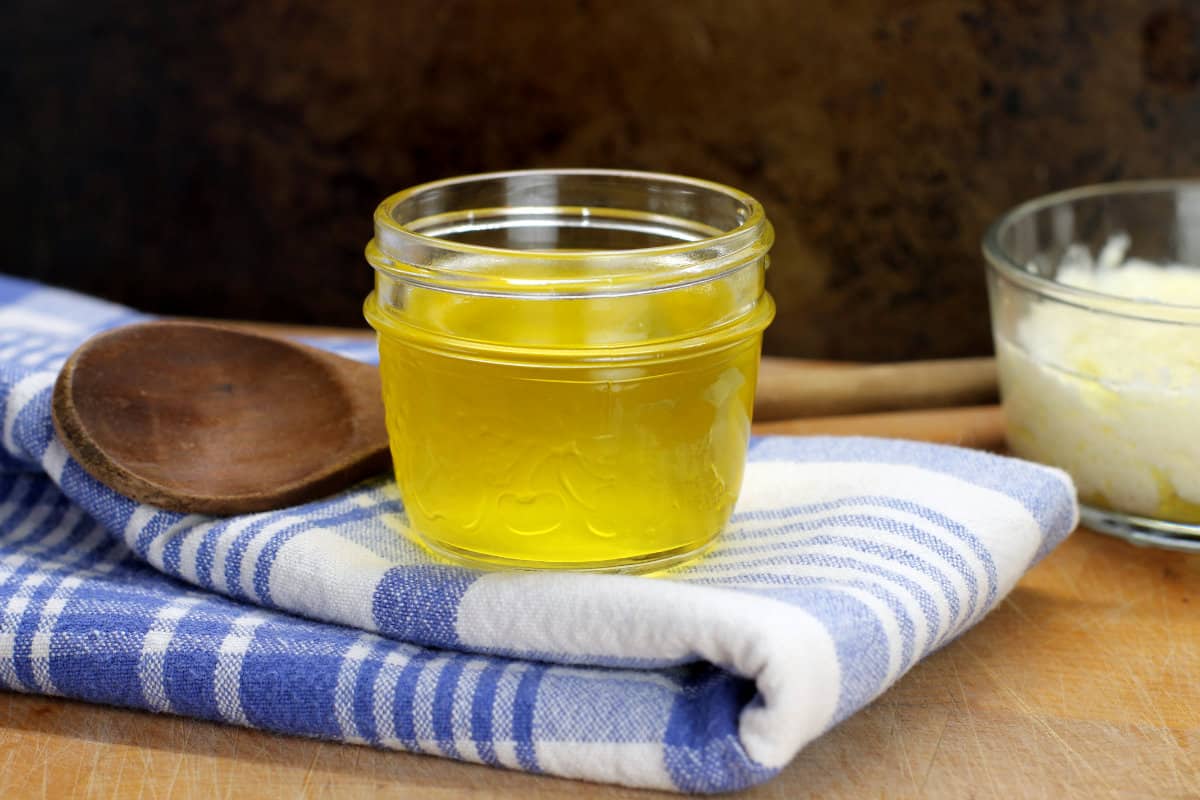
This makes clarified butter a great option for cooking when sautéing vegetables, meats, and starches.
If you were to use regular butter to fry at high heat, the milk solids would burn and create off flavors.
Equipment & Ingredients
What do you need to make clarified butter at home? Only one ingredient: butter! If possible try and choose a European brand or style of butter as these will normally have a higher butterfat content, and tend to have a better flavor.
You'll also want to use a thick bottomed saucepan which won't easily scorch or burn.
Can you use salted butter?
Yes, you can technically use salted butter, though if you clarify salted butter it is impossible to tell how 'salty' the end product will be. This is why using unsalted butter is preferred when making your own clarified butter at home.
If you plan on using the clarified butter in baking, always use unsalted butter.
How to clarify butter, step-by-step instructions
So how do you make your own clarified butter at home? It's super easy I promise!
1.Start by placing a few pounds of butter in a sauce pot or other heat proof container.

Place the pot of butter on the stove or other heat source, (the back of a grill works great as well), and keep the heat on low. It should be just hot enough to melt the butter.

2. Once the butter has fully melted, you'll start to see the butter fat start to separate out naturally, with the milk solids rising to the top and forming a foamy layer, and the water sinking to the bottom.
Skim the foam off (these are the milk solids), as they form, and discard them.
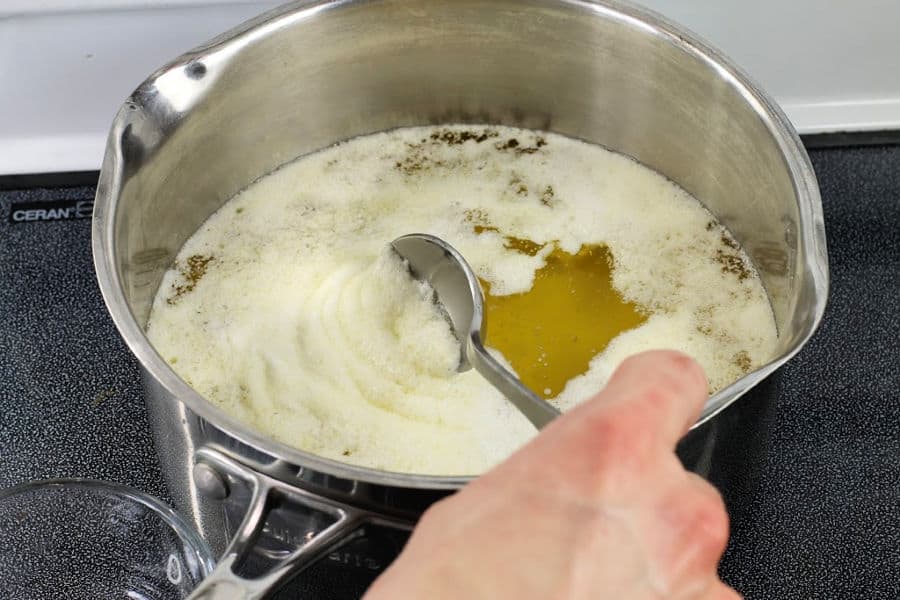
3. When the butter has fully clarified and all the milk solids have been removed, the pure butter fat is ladled out, leaving the water behind in the pot. The clarified butter is best stored in glass jars for future use.
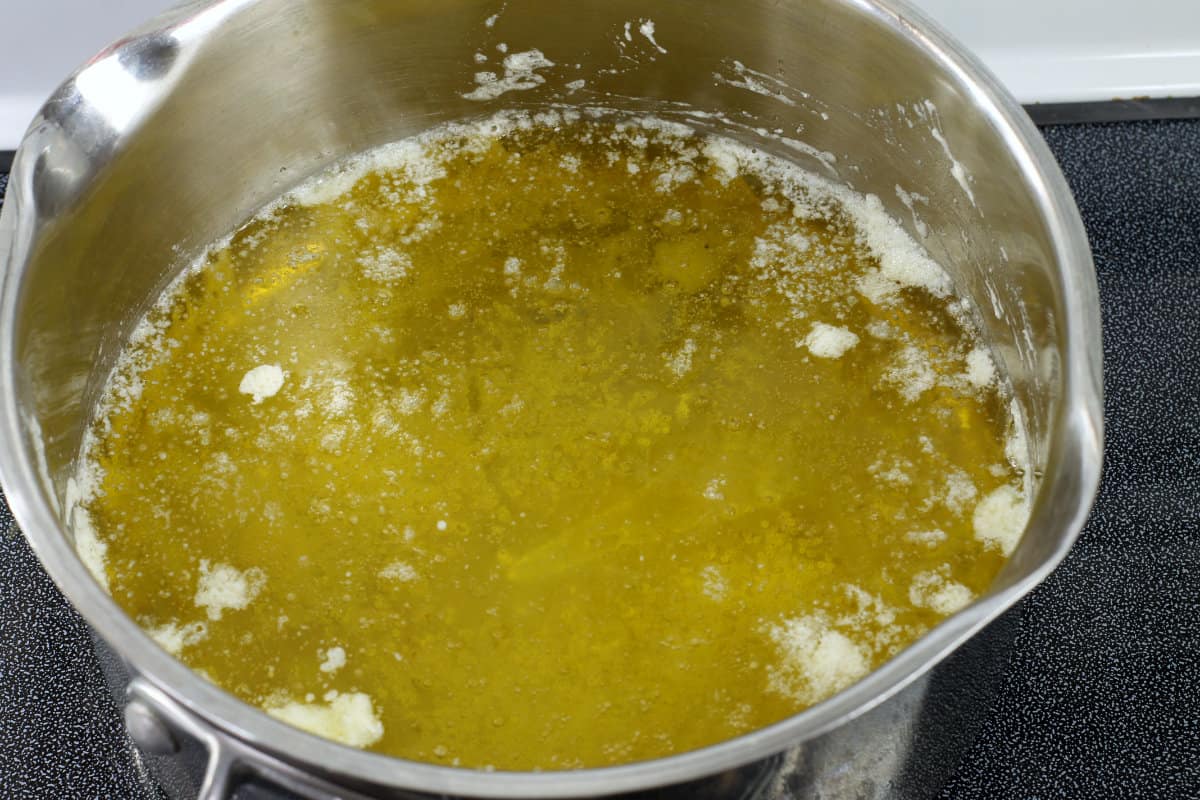


Made the recipe? Comment & Rate it below, then take a picture and tag me on Facebook & Instagram: @earthfoodandfire . For more from scratch recipes follow me on Instagram & Pinterest
Recipe
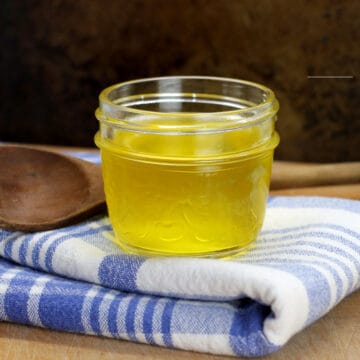
How To Make Clarified Butter At Home
Equipment
Ingredients
- 2 lb Butter unsalted
Instructions
- Placing the butter in a deep sauce pot or other heat proof container.
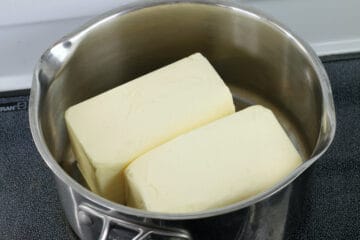
- Place the pot of butter on the stove or other heat source, (such as the back of a grill,) and keep the heat on low.
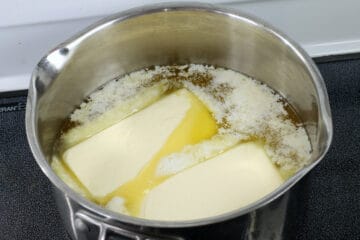
- Once the butter has fully melted, you'll see the butter fat start to separate, with the milk solids rising to the top and forming a foamy layer. Skim the foam off and discard them.
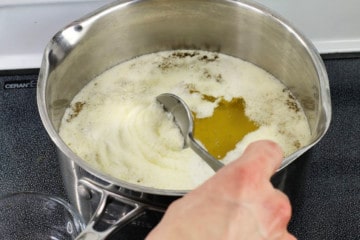
- When fully clarified and clear, the pure butter fat is ladled out or strained through a fine mesh strainer to remove any remaining milk solids.
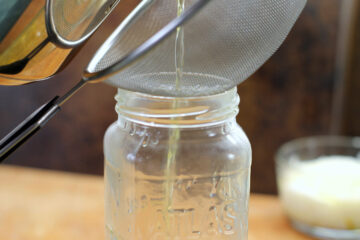
- Store the clarified butter in glass jars in the pantry for up to 3 months, or in the fridge for up to a year.
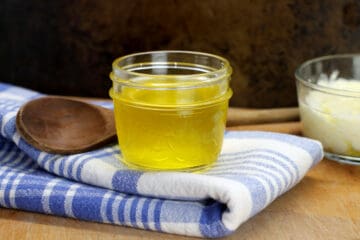
Notes
- Using a tall metal container, or a deep narrow pot when clarifying butter will make skimming the milk solids from the top easier.
- If you'd like to make your own ghee keep cooking the butter over a gentle heat until the milk solids sink to the bottom and start to brown. Strain your homemade ghee through cheese cloth or carefully ladle out the fat and store it in glass jars.
- Butter solids - If you've browned the milk solids to make ghee, save them! These browned milk solids can be used to add flavor to soups, mashed potatoes, vegetable dishes, or used as a topping on bread!
Nutrition
Nutrition info is auto-generated. This information is an estimate; if you are on a special diet, please use your own calculations.
Tips & Tricks
- Using a tall metal container, or a deep narrow pot when clarifying butter will make skimming the milk solids from the top easier.
- If you'd like to make your own ghee keep cooking the butter over a gentle heat until the milk solids sink to the bottom and start to brown. Strain your homemade ghee through cheese cloth or carefully ladle out the fat and store it in glass jars.
- Butter solids - If you've browned the milk solids to make ghee, save them! These browned milk solids can be used to add flavor to soups, mashed potatoes, vegetable dishes, or used as a topping on bread!
FAQ
How Long Will Clarified Butter Keep?
At room temperature, clarified butter will solidify slightly. It can easily be stored in a cool pantry for 2 - 3 months in an airtight glass jar. If refrigerated, clarified butter can easily keep for up to a year.
Ghee, (which is made by browning the milk solids) will keep slightly longer then just clarified butter as, anti-oxidants created during the browning process help improve shelf-life.
What's The Difference Between Clarified Butter & Ghee?
While clarified butter and ghee are very similar there is one small difference.
- Clarified butter consists of pure butter fat. The water has been evaporated, and the milk solids skimmed off the top as soon as they start to float.
- Ghee on the other hand, is cooked over low heat until the milk solids start to brown after which the butter fat is strained out. This results in a nuttier and richer flavored end product.
As mentioned above both ghee and clarified butter have extended shelf lives over regular butter, and make an excellent fat to cook with due to it's high smoke point.
They are both easy to make and great to have on hand. The classic hollandaise Sauce for example, can't be made without it.
Is Drawn Butter The Same As Clarified Butter?
Drawn butter is a tricky term because it can refer to both clarified butter, or simply melted butter. It depends on the cook!
Butter that has just been melted still contains all the milk solids which adds some flavor to the liquid butter making it ideal as a dipping sauce sauce or tossed with freshly steamed vegetables.
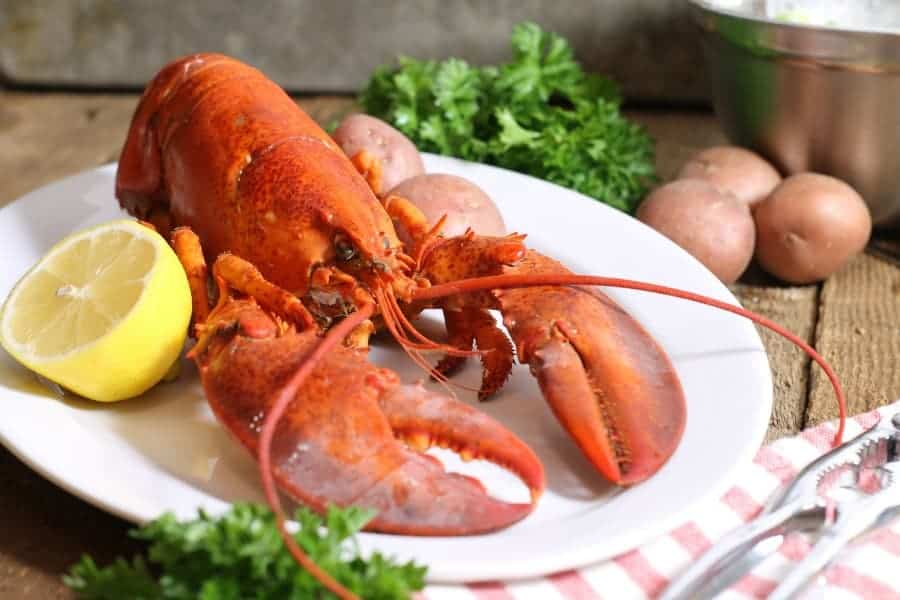
Freshly cooked lobster is often served with drawn butter as a dipping sauce.

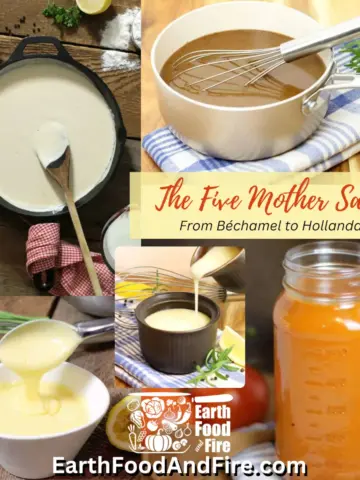
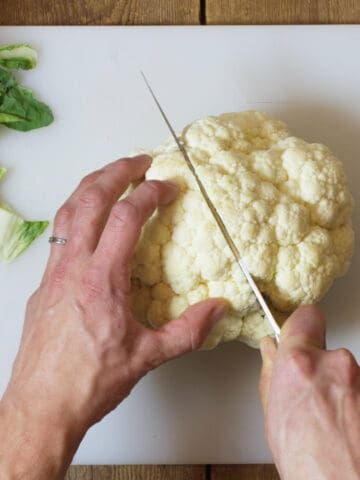
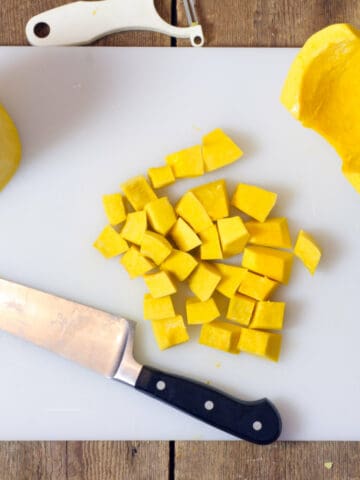
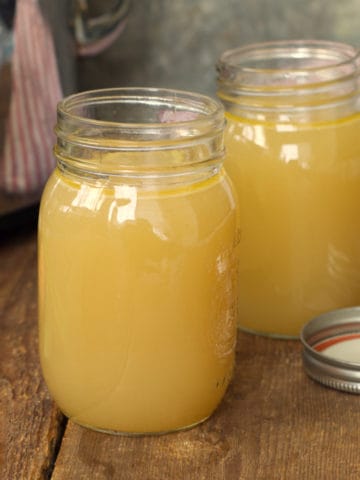
Annika
Very informative, Markus... as always. I always, incorrectly of course, use the terms ghee and clarified butter interchangeably. I knew they are slightly different but didn't know all the details... now I do!
Ayngelina
How much more expensive do you think clarified butter is over canola oil? Like 3 times the cost?
Markus Mueller
Here on PEI, Whole Butter is roughly double the cost of Canola Oil per/ml. So yes, while Canola Oil is cheaper to use, it can't be consumed by someone on a Paleo Diet for example, in which case clarified butter would be a great alternative for use in high heat cooking. Unfortunately the canola crop in North America is also overwhelmingly genetically modified, which is something I try to stay away from personally. Knowing how to properly clarify butter is another good skill to know when trying to cook from scratch and go back to basics and traditional cooking.